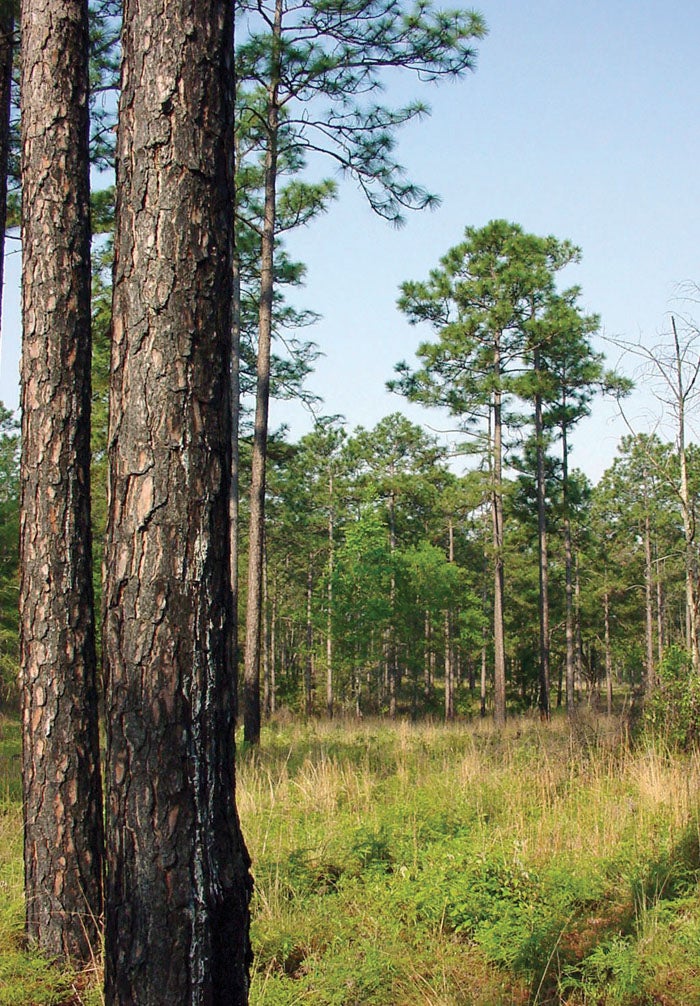Amy-Lynn Albertson: All about the mighty pine tree
Published 12:00 am Saturday, December 24, 2022

- Longleaf pine forest. Photo from the University of Georgia
By Amy-Lynn Albertson
N.C. Cooperative Extension
As a non-North Carolina native, I did not know the meaning of Tarheel. I am a self-identified tree-hugger environmentalist, so I was interested to learn. The long leaf pine is not the state tree of North Carolina but is where we derive the name “Tarheel” State. North Carolina’s state tree is just the pine tree, and our state flower is the dogwood. During Colonial times, North Carolina was a key supplier of naval supplies. The tar, pitch and turpentine produced by the longleaf pine pinus palustris were used to coat wooden ships to prevent them from leaking. Harvesting this stuff was messy work and inevitably ended up on the feet of the workers leading to the nickname “Tarheel.” The longleaf pine is native to the Southeast and takes 100 to 150 years to reach maturity. They can live to be 500 years old. The longleaf pine is specifically adapted to an environment where extensive fires may occur every few years. They prefer well-drained sandy soils, which is why they don’t grow well here in Piedmont on soils. Hundreds of years ago, millions of acres of longleaf pine towered over green and golden grassland from the Triangle to the coast. Lightning-caused wildfires eliminated the mid-story while savanna grasses, low shrubs and herbaceous plants thrived as habitat and nutrient sources for thousands of species under longleaf pine trees. Healthy longleaf pine ecosystems are second only to the rainforest in biodiversity. Today, only about 3 million acres of native longleaf pine remain of the original 93 million acres that covered the Southeast. But longleaf pines are resilient and grow deep tap roots — both in the ground and in the history of North Carolina. Through conservation and preservation, we can save longleaf pine ecosystems.
I went to Italy this past October, and one of the many things that stood out to me while in Rome was the beautiful umbrella pine trees that dotted the landscape. The trees slightly resemble something Dr. Seuss would have dreamed up, with tall and skinny trunks supporting widespread canopies of needles high in the air. Stone pines, pinus pinea, have been used and cultivated for their edible pine nuts since prehistoric times. The tree is among the current symbols of Rome. It was first planted in Rome during the Roman Republic, where many historic Roman roads, such as the Via Appia, were (and still are) planted with lines of stone pines. The stone pine has been an aesthetic landscape element in Italy since the renaissance garden period. The pines live for 50 to 150 years without many problems. However, that means that the trees planted by Mussolini starting in the late 1920s are now beginning to fall. The city of Rome is tasked with maintaining the stone pines and preventing them from crashing into houses and cars when the wind picks up or pests weaken the trunks and branches. In Ancient Roman times, the health of the branches of the pines in the Forum were thought to predict the empire’s fortunes. Today, the evergreen stone pines are vital to the city’s landscape. For more information about pine trees or other horticultural topics, contact the Rowan County Extension Center at 704-216-8970 or online at http://rowan.ces.ncsu.edu.
Amy-Lynn Albertson is the director of the Rowan County Extension.



